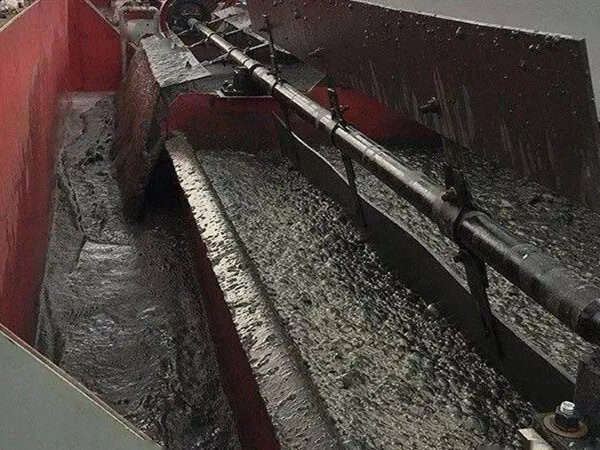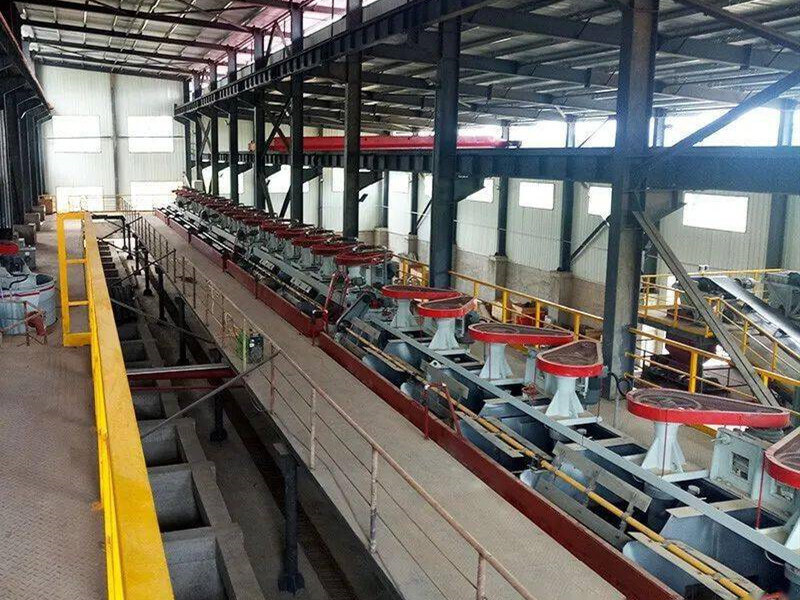Lithium ore is one of the primary lithium sources, produced in muscovite-type and lepidolite-type granite pegmatites. It often coexists with lepidolite, beryl, niobium-tantalite, tourmaline, muscovite, etc. It belongs to the same silicate minerals as these gangue minerals. Lithium ore flotation plants often use lithium ore flotation technology to purify lithium ore. Let’s learn about lithium ore flotation technology.
Lithium Ore Flotation Technology
- Grinding
The ore is the first ground to dissociate lithium minerals from other minerals (or gangue minerals). - Sizing and dosing
Adjust the slurry concentration to suit the flotation requirements, and add the required flotation reagents to improve efficiency. - Flotation separation
The pulp is inflated and floated in the flotation machine to complete the separation of minerals. - Dehydration and separation
After flotation, the foam product and tailings product are dehydrated and separated.
Beneficiation and Flotation Process of Lithium Ore Flotation Technology
- Crushing is to change the large pieces of lithium ore into small pieces to meet the requirements of the following process for the particle size of lithium ore.
- Grinding is to dissociate lithium ore from gangue minerals to the maximum extent through the impact and grinding action of the medium (steel ball, steel rod, gravel) and the mineral itself in mechanical equipment to provide a particle size consistent with The material required for the following beneficiation process.
- Sorting, also known as lithium ore sorting or sorting, uses specific beneficiation methods to separate valuable minerals, gangue minerals, and different beneficial minerals in lithium ore from each other and enrich them separately. The sorted products are lithium ore concentrate and lithium ore tailings.

The internal structure of lithium ore flotation technology, in addition to the content of the principle process, also includes the times of grinding and classification of each section, the times of roughing, beneficiation, and sweeping in each cycle, the method of medium ore treatment and the feeding process. Roughing is the first sorting operation that feeds the ore in each sorting cycle, and rough selection is generally only once. It mainly uses for flotation of those single ore particles with medium particle size and easy to float. Occasionally, there is also secondary roughing. That is because the flotation of roughened minerals is different, and some need to be roughed under another condition. It can combine the second roughing concentrate with the primary roughing concentrate. The operation used to process the roughened foam product to improve the concentrate grade is called beneficiation. The roughened tailings generally contain the following:
- Hard-to-float coarse particles.
- Fine particles.
- Contiguous bodies with incomplete monomer separation.
The operation used to treat rougher tailings to improve beneficiation recovery is called sweeping. In rougher tailings, many conjoined bodies are not separated from monomers, and the grade is still high, and it can also send them to regrinding for re-election.
Lithium ore flotation technology mainly affects ore properties, grinding fineness, stirring operation, adjusting agent ratio, and water hardness. The pure spodumene mineral with an uncontaminated surface makes it easy to float with oleic acid and soap agents. The optimum pH in the flotation pulp is near neutral weak alkaline. Before spodumene flotation, Na2CO3 should be added to eliminate the influence of molten salt ions in the pulp and to carry out stirring and desliming. The surface of the lithium ore should be scrubbed (lithium ore) in the highly alkaline medium formed by adding NaOH. The amount of NaOH determines the recovery rate of pyroxene).
The Principle of Lithium Ore Flotation Technology
- Add collectors or activators to increase the hydrophobicity of the mineral surface to be floated.
- Add inhibitors to make the surface of minerals that do not want to float more hydrophilic and inhibit them from floating.
- A blowing agent is added to facilitate the formation and dispersion of bubbles.
The adjusted pulp is sent to the flotation cell, and the pulp and air are simultaneously sucked into the flotation cell by the rotating impeller. The air is crushed into many air bubbles by the movement of the slurry flow. The foaming agent promotes the formation and dispersion of micro-bubbles. In the slurry, the bubbles collide with the ore particles. And the difference in surface hydrophobicity determines whether or not ore particles adhere to the bubble’s surface. The ore particles with strong surface hydrophobicity are attached to the surface of the bubbles, carried by the bubbles, and rise to the surface of the ore slurry to form a foam layer. The scraped foam is called lithium ore concentrate. The particles with strong surface hydrophilicity do not interact with the ore slurry. The bubbles adhered and remained in the slurry and finally discharged out of the tank with the slurry flow to become lithium ore tailings.

What Are The Characteristics of Lithium Ore Flotation Technology?
Three alkalis: It refers to sodium hydroxide (NaOH), sodium carbonate (Na2CO3), and sodium sulfide (Na2S), which are used as regulators for the flotation of lithium ore. Na2CO3 and Na2S are used to eliminate the influence of dissolved salt ions in the pulp. The highly alkaline medium formed by NaOH can scrub the surface of lithium ore. Its dosage, adding location, and Ca2+ concentration in the water used in the sorting process will all impact lithium ore flotation.
Two soaps: It refers to oxidized paraffin soap and naphthenic acid soap, which are used as spodumene collectors and have foaming properties. However, its dosage will change with the hardness of the water. When the water quality is soft, naphthenic acid soap is not conducive to flotation. On the contrary, the flotation effect is significantly increased.
Commonly Used Equipment for Lithium Ore Flotation
Lithium ore flotation technology mainly includes positive, reverse, and combined flotation technology. The pure spodumene on the surface is easily floated by oleic acid and its soaps. The pH range of flotation is 4.0~9.0, and the optimum pH is weakly alkaline. For lithium ore whose surface is polluted by weathering or by slime in the slurry, its floatability deteriorates. Due to harmful ions (Ca2+, Fe3+, Mg2+, etc.), gangue minerals like quartz are activated, spoiling the flotation effect. Studies have shown that if the surface of spodumene is first treated with alkali (a strong base such as NaOH), the spodumene can be easily floated with a variety of cationic collectors.
LATEST PRODUCTS
Twin Screw Feeder
【Feeding Capacity】 10-160 t/h【Power】 2.2-…
Tubular Screw Conveyor
【Capacity】6-50 m3/h【Procesible Material】 …
Heavy Plate Feeder
Capacity: 100-240 m3/h Power: 15-45 kW Speed: 0…









